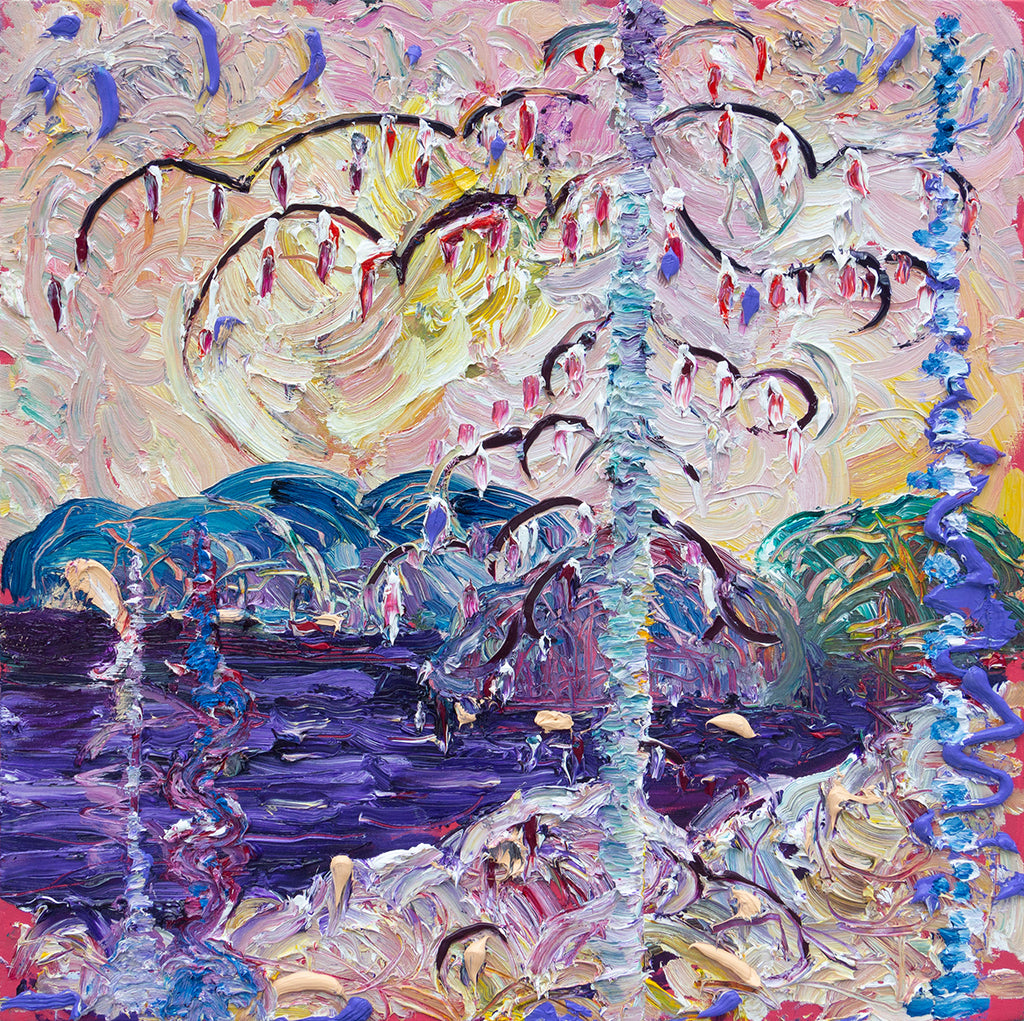
Gavin Lynch | The Seasons Reverse
March 19-31, 2022
340 Dundas Street West, Toronto
From March 19-31, Bau-Xi Gallery presents the inaugural exhibition for Gavin Lynch, in his highly anticipated show The Seasons Reverse.
Featuring new artwork by the artist, The Seasons Reverse observes Lynch’s signature contemporary, texturally nuanced paintings. Drawing on various movements in art history, fiction, environmental degradation, and nature itself for inspiration, the artist challenges the traditional landscape with his collage-inspired approach and exceptional visual presentation. By employing subtle pixelation within his work, Lynch considers the increased consumption of the natural world through digitized means, rather than the physical experience.
Artist Statement:
“The Seasons Reverse began with a simple idea: to create a cast of fictional landscapes that existed beyond the effects of humans, in which nature was left to its own accord to recover, rebound and even flourish. A post human speculative fictional, if you will. However, unlike much of the literary speculative fiction being written today, I was interested in eschewing depictions of the dystopian in favour of hopeful, meditative spaces. Perhaps there is yet some agency in the notion of beauty acting as an inspiration for humans to have urgency in meeting the climate crisis head on. Naturally all of this was just a departure point, the pieces inevitably took on a life of their own.
Narratively, the show begins and ends with paintings of the sun, rising and setting, which provide pictorial bookends to the exhibition, while referencing the natural solar cycle to which we are all tethered. I thought of the show as embodying a half rotation of the Earth, from dusk till dawn.
Individually, many of the paintings were composed as digital collages (a first for me), which cobbled together multitudes of images of varying forested areas in North America: snippets of the California Redwoods are grafted with the West Coast Rainforest and then inserted into the woods surrounding my home in Western Quebec, for instance. Source imagery ranged from pictures from my personal database, to photos donated by close friends, to stock imagery from the internet.
As such, these paintings are hypothetical-hybrid spaces, contained pictorial spaces wherein nature has cloned and grafted itself, sometimes containing multiple light sources, impossible perspectives and otherworldly palettes. As with a lot of my work, collage is front and centre as a working methodology, in both the preparatory and final works. Parts of one motif repeat and morph into another, almost as though being cut and pasted across space-time.
Leading up to the production of the show I read both non-fiction and fiction that address these ideas of how nature will respond to a decline in human pollution and destruction. Namely Cal Flyn's book Islands of Abandonment: Nature Rebounding in the Post Human Landscape resonated with me, in which she poetically examines real environments that have been severely damaged by humans and then have been subsequently abandoned. Remarkably some of the most ecologically devastated spaces in the world are now, after being abandoned by humans, amongst the most biodiverse in the world.
By no means a justification for our impact on the planet, but a hopeful sign that nature could in fact prosper, if we can only right our course.”
________________________________________________________________
Works by the artist can be found in collections including Royal Bank of Canada; Toronto Dominion Bank; Scotiabank; City of Ottawa Public Art Collection; University of Toronto; Simon Fraser University Permanent Collection, B.C. Hall; Air Canada; among others.
VIEW THE FULL COLLECTION














